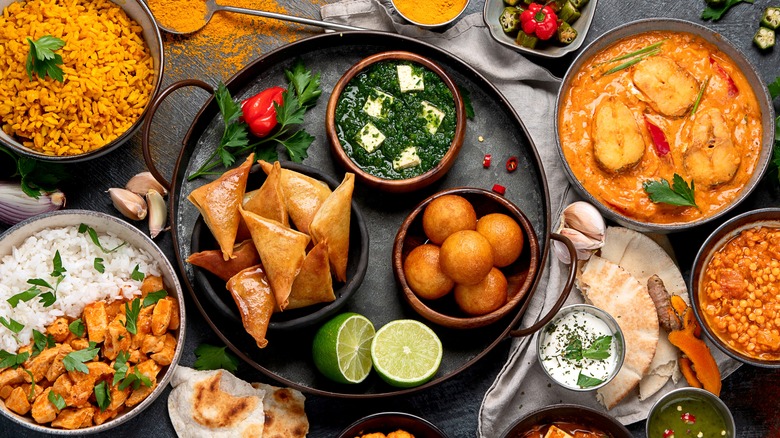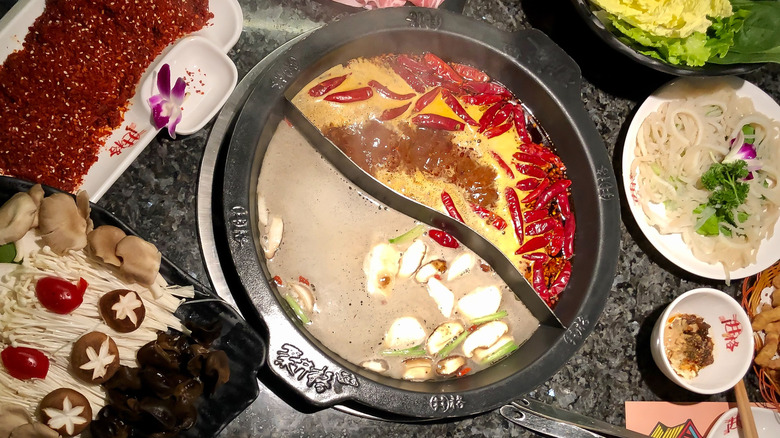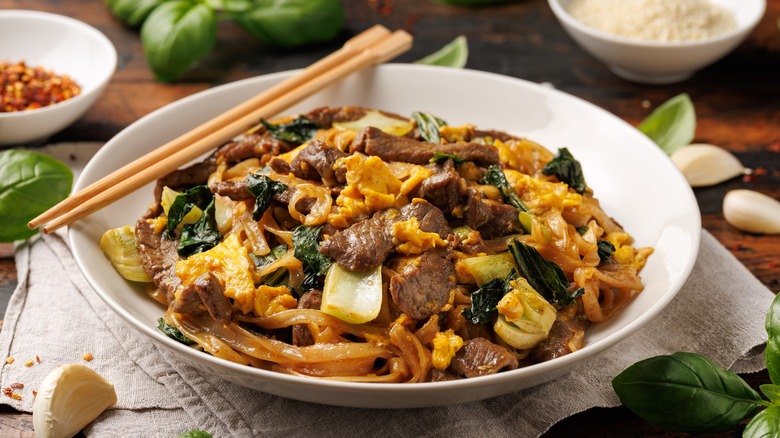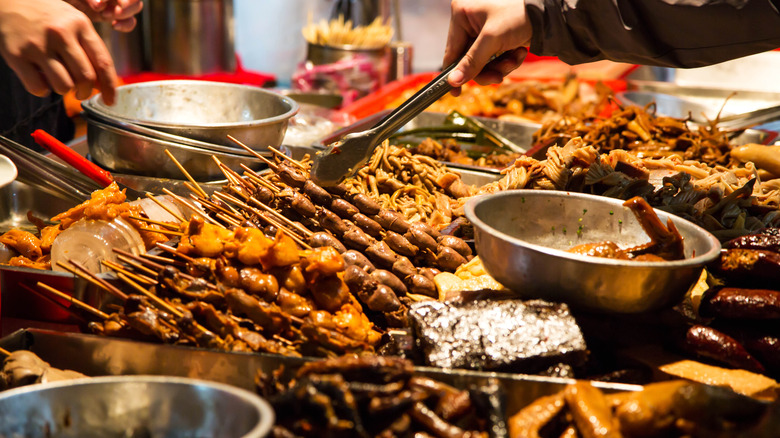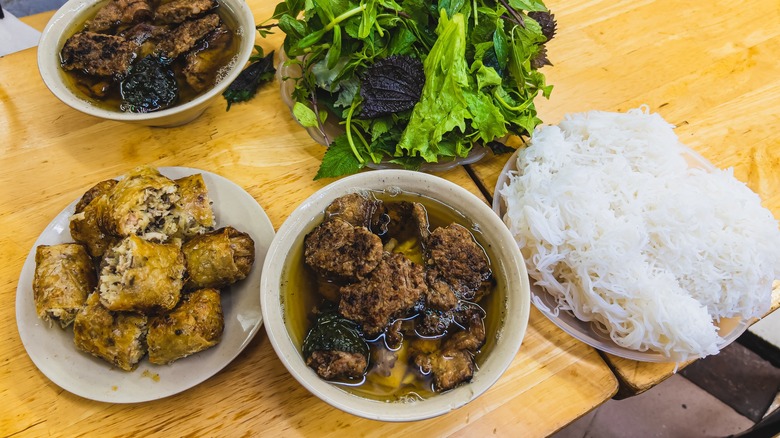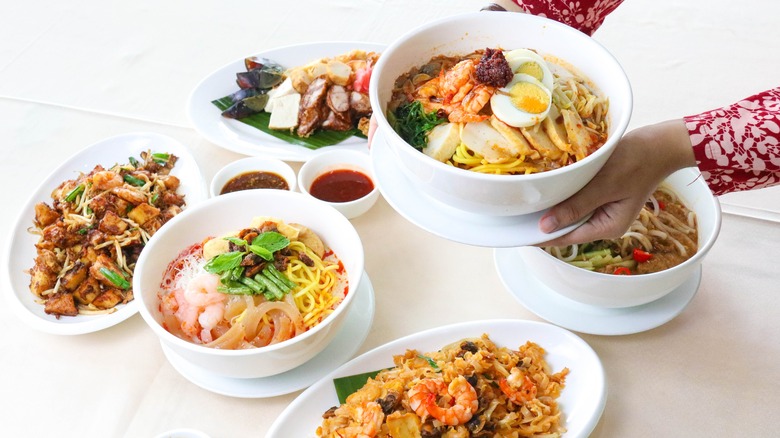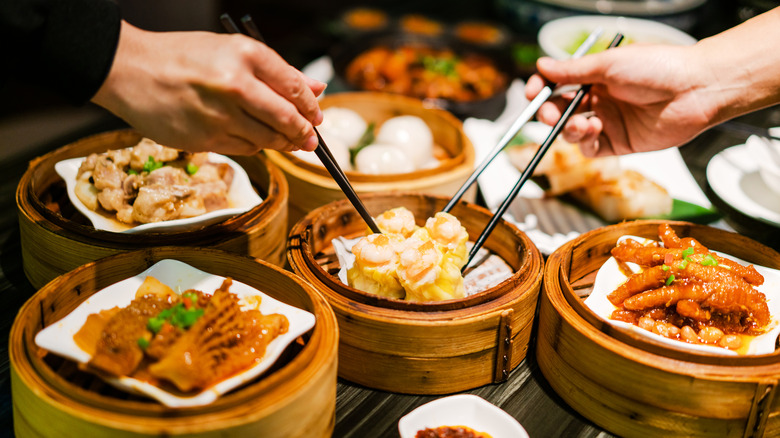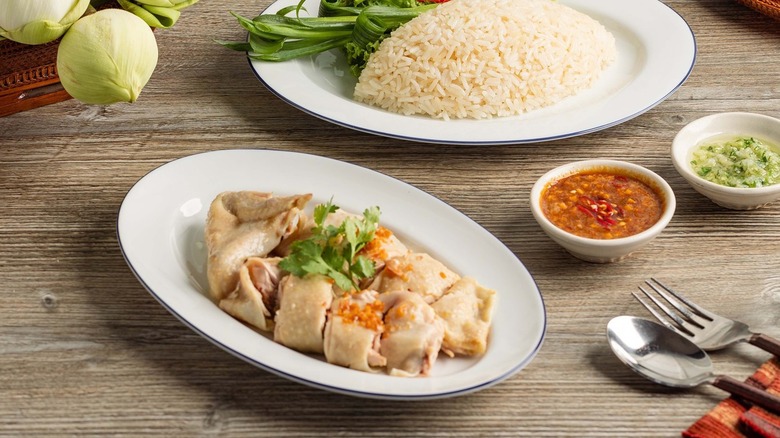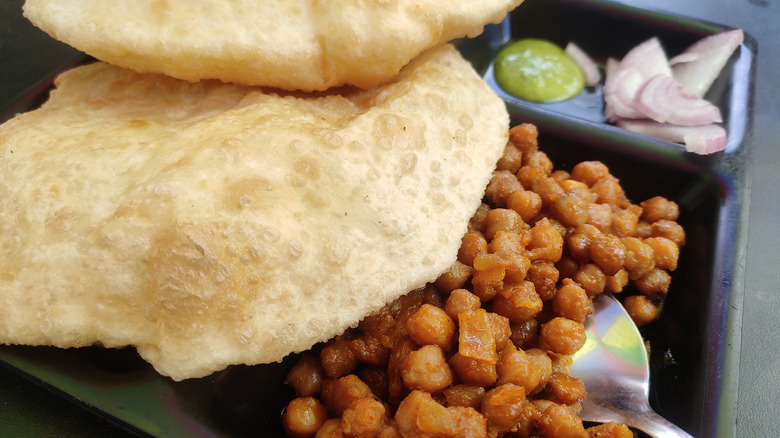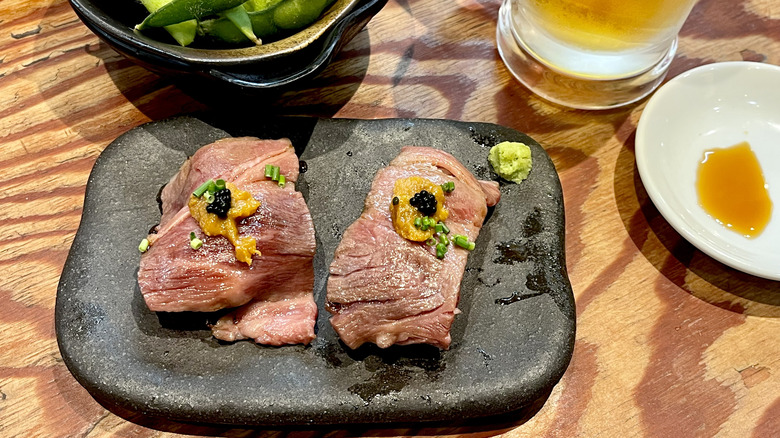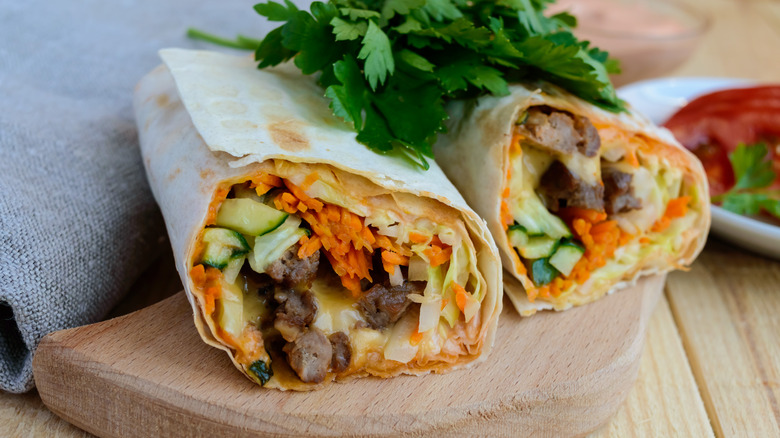10 Best Destinations Across Asia For Foodies
With more than half the world's population, Asia is a vast, culturally rich continent full of mystique, wonder, and diversity. It is one of the most enriching areas in the world to travel, and its amazing variety of food is the cherry on top. Every region offers unique flavors that influence each other exponentially and in all directions, resulting in a melting pot of tastes and smells. It has everything, from intense spiciness to rich buttery flavors and sticky, sweet sauces.
The food in Asia is so good because it has evolved with care and precision over millennia. Locals have also taken full advantage of imported spices and vegetables that are not native to their land. One such would be the chili pepper, which has profoundly affected countries like Thailand, Malaysia, and India. The fiery fruit's versatility shines through in the countless ways the continent's different cultures incorporate it into signature spicy dishes.
Yet it's not all about heat; the savory, sweet cuisine of Vietnam, with its fresh herbs and refreshing notes, was always cited by TV chef Anthony Bourdain as one of his favorites in the world. Then you have the aromatic combinations of the plentiful spices on offer in India, the umami expertise of the Japanese, and the unparalleled adventurous flavors brought to the table by the Chinese. Anyone traveling in this incredible region quite simply has more than temples and tropical paradises to look forward to. Let's take a look at 10 here.
Sichuan, China
China may be more famous for world wonders like the Great Wall of China and other destinations and attractions that should be considered wonders of the world like the Forbidden City. But the province of Sichuan, located in the southwest of China, is one of the best places for foodies. It's home to around 83 million people and is the fourth most populous in the country. Chengdu is the capital city and the best place of interest for spice lovers. However, the entire province offers an abundance of fiery delights.
When the Portuguese introduced chili peppers in the 16th century, the locals must have thought they had struck gold. The fiery spice of the fruit (la) is magically balanced with the numbing sensation of the local peppercorn seeds (ma). Nowadays, wherever you eat in the province, you'll be offered "mala" cuisine almost everywhere.
Gong bao ji ding is known as kung pao chicken in the West, yet the disparity in flavor couldn't be greater. The Sichuan version blends spicy chilis, numbing peppercorn seeds, and peanuts with a rich sauce that differs throughout the country. In Sichuan, it's traditionally more savory, but if you try it in Beijing, it's sweet and sticky. However, the region is also known for its masterful ma la hotpot. Ordering the 'yin-yang' variety will see one side half full of an oily, spicy, and numbing soup with the other half a creamy, cooling alternative for when the heat gets too much. Other signature dishes are mapo tofu (a mala tofu dish), mala xiang guo (an amazing stir fry), and la zi ji (a dry, spicy chicken dish).
Bangkok, Thailand
Bangkok is the place for foodies in Southeast Asia. It's also the best place on the continent for a mix of shopping, partying, and culture, and it's the ultimate destination for a December travel bucket list when the weather is comfortable. But if food is your top priority over everything, you can dine at Michelin-starred restaurants or devour endless treats from street vendors.
Flavorful coconut curries await, with red, yellow, and green varieties offering a traffic-light selection of spice levels. Then there's the aromatic noodle dish called pad thai that combines subtle spice with sweet, sour, and savory on a base of rice noodles. The more adventurous can try tom yam goong for a spicy and sour seafood soup experience.
Of course, you'll likely feel the need to visit the city's attractions in between devouring its flavorful sensations. The stunning Wat Pho is a 16th-century temple containing the country's longest reclining golden Buddha. Nearby, the Grand Palace, the official residence of the kings of Siam (Thailand), is another stunning landmark. It's used for ceremonial occasions today, and the architectural mashup of Italian Renaissance and elaborate Thai decoration is something to behold.
Following these impressive sights, your mind will likely focus on gorging on the city's sumptuous street food. Visit any of Bangkok's night markets for seafood skewers, crispy pork, Thai boat noodles, spicy papaya salad, and dozens more. You can end the culinary adventure with a delectable mango sticky rice for dessert.
Taipei, Taiwan
Taiwan is an absolute foodie's paradise, and the capital city, Taipei, is the epicenter of flavorful eruptions. The dominant influence on Taiwanese food is understandably Chinese cuisine. But even these dishes have developed with their own local twist on top of Japanese influences. It's the city's famous night markets where you can sample the delights to your heart's content. The welcome addition of the friendly nature of the locals makes it one of the world's safest for a solo trip. No doubt, you'll end up spending a large portion of your vacation feasting, chatting, and learning all about Taiwanese culture.
Shilin Night Market is the most famous spot to go with its barbecued skewers and fried dumplings, drawing visitors and locals alike. However, it's primarily a busy tourist spot. For a more relaxed local vibe, Raohe Night Market is the place. Here you can try the delicious Fuzhou pepper pork buns, among other famed Taiwanese dishes, such as pork rib soup, and, of course, more of the city's ubiquitous seasoned kebabs. You can also indulge in the market's signature oyster omelets and finish off with lashings of peanut ice cream.
Another that you can't miss is lu rou fan, a rice dish topped with minced pork that is considered a classic Taiwanese comfort food. Then there's the unforgettable nu rou mian (Taiwanese beef noodle soup), the national dish. The legendary Yong Kang Beef Noodles restaurant may well be a bit of a tourist trap, but it serves up an incredibly savory and spicy broth with melt-in-your-mouth chunks of beef.
Hanoi, Vietnam
When legendary TV chef Antony Bourdain shared a meal with the then U.S. president Barack Obama for his TV show "Parts Unknown," it was Hanoi that was bestowed with the honor. The dish of choice? Hanoi's very own bun cha, a cold, sweet, and sour broth with a savory hint of fish sauce served with grilled pork belly and patties reminiscent of mini burgers. It's served on a base of cold white noodles with pickled radishes, carrots, and cucumber, finishing off the taste sensations.
The best thing about the setting was that this was no Michelin-starred restaurant. The meeting took place in one of Hanoi's many hole-in-the-wall family-run eateries. Perched precariously on the tiny plastic stools that are seen everywhere in the Vietnamese capital, this unlikely pair slurped their noodles while discussing various issues of the day.
Today, the "Bun Cha Obama," as the restaurant is now colloquially known, is still there, and you can order the same slap-up meal that everyone's favorite TV chef and president feasted on back in 2016. The "Combo Obama" also consists of the crab spring rolls the pair ate and the cold Hanoi Beer they washed it down with. The best part is that, despite the restaurant's fame, this meal still costs less than $4, including the beer (Vietnam is one of the best destinations where the U.S. dollar goes the furthest). Besides this historic dish, Hanoi also offers incredible flavors in the form of banh mi, the city's famed sandwiches, and what is easily the country's best pho, the world-renowned peppery broth with its rice noodles and DIY condiments.
Penang, Malaysia
The Malaysian island of Penang is a melting pot of Malay, Chinese, and Indian influences. It's particularly famous for its street food, with dishes like laksa, char kway teow, and nasi kandar. Laksa is the famed Malaysian noodle soup that treats those who lap up its flavors to a spicy, fragrant coconut broth with multiple layers of taste. Various toppings add texture, including crispy fried shallots and puffs of tofu that absorb the flavors into their spongy interior.
On the other hand, char kway teow may seem like a simple noodle dish. But it's more complex than it first seems, and only the hawkers in Malaysia have it mastered. The dish's smoky aroma is difficult to replicate, and the textures and flavors are at their best in Penang. Nasi kandar is a dish that originated on the island, and it combines rice with a selection of Indian-style sauces flooded over it to create a flavorful combination and includes chicken, beef, or healthy vegetables like eggplant.
The best place to try any of the superb Penang food is in the widespread kiosks all over Georgetown. You can burn off the many calories you'll likely consume with walks between food stalls while you'll also get your steps in while photographing the city's stunning architecture or hiking Penang Hill for panoramic views of the island. In fact, the incredible food, coupled with the island's famed architecture, easily makes Penang one of the best islands in Southeast Asia to visit.
Hong Kong
Hong Kong's airport has unrivaled connectivity and won the title as the best in Asia, and arriving there tees you up for what to expect in this incredible city. It delivers world-class shopping, outstanding theme parks (including Disneyland), layers and layers of culture, and even some excellent hiking and beaches to relax on.
However, there are also a multitude of superb eateries in Hong Kong, including 212 Michelin-starred restaurants. But for a lively and authentic local experience, serious foodies should try the 'dai pai dons,' which are busy open-air food centers frequented by locals and in-the-know expats. Tung Po Kitchen is one such. It's another plastic stool favorite of Anthony Bourdain's. The American chef ate mantis prawns and squid balls with squid-ink pasta here. But if the jet-black noodles don't appeal, you can try long, thin razor clams with garlic and Chinese wine or any of the other 150 or so dishes on the menu.
Of course, most foodies think of dim sum when talking about Hong Kong food, and for good reason. Spring Moon, located in the historic Peninsula Hotel, is one of the most highly regarded places for this. In addition to the quality 'baskets' of food like steamed lobster dumplings and baked turnip puffs, this Michelin Star restaurant offers luxurious decor and ambiance.
But you don't have to fork out a small fortune for quality dim sum. With unpretentious, down-to-earth places like One Dim Sum ubiquitous around this special administrative region of China, you'll never be short of delicious dishes to try. This particular place is known for its sumptuous, deep-fried, glutinous rice pork dumplings and barbecued pork buns.
Singapore
As a destination, Singapore is very similar to Hong Kong. They are both small, densely populated islands with a thriving economy. Singapore also has a large Chinese population that has been a major influence on its cuisine. However, this tiny Southeast Asian island nation also has a substantial Indian and Malay influence, giving it another layer of culinary history. Like Hong Kong, much of the best food the country has to offer is in its lively hawker centers that serve up incredible dishes, such as chili crab, laksa, and satay sticks, to hungry locals and tourists.
Singapore also offers some of the best shopping on the planet. After a full day of browsing the malls and haggling in markets, you'll surely want to find a spot to relax, eat, and drink. It may not be the cheapest place in the region by any stretch of the imagination, but you do get quality in abundance. Maxwell Food Center in Chinatown is one to offer foodies this quality, with oyster omelets and Zhen Zhen porridge (a soupy breakfast rice congee).
However, while originating in Hainan, China, Hainanese chicken rice is regarded as the country's unofficial national dish and passionate arguments over who cooks the best are often debated. Yet, Boon Tong Kee on Balestier Road is one that people often agree on. What started as a small kiosk in the early 1980s is now a nationwide chain. You'll need to arrive outside of peak times if you don't want a long wait for your succulent poached chicken with perfectly cooked savory rice. But, even if you are late, it's well worth the wait.
Delhi, India
India may be home to some world wonders like the Taj Mahal in addition to some amazing lesser-known attractions in Asia, but it also has a vibrant food scene. Offering everything from rich Mughlai curries to street food staples like chaat and parathas, the capital city, Delhi, provides a tantalizing blend of traditional and modern flavors that reflect India's diverse culinary heritage.
While you may hear phrases like 'Delhi belly' before you arrive, you shouldn't let that put you off trying the wide range of delights on offer. However, you definitely should not eat meat dishes from street kiosks if you want to avoid any mishaps. It also definitely pays to read reviews beforehand or visit places that are packed with customers (they're busy for a reason).
If you want to avoid meat altogether, India has some of the best vegetarian cuisine in the world. These 'pure veg' eateries are ubiquitous and of excellent value. Chandi Chowk is the premier destination for an authentic Delhi street food experience. Giani's di Hatti is said to have the best Chole Bhature, a simple North Indian dish of chickpeas in a mildly spiced red sauce with onions and tomato. It's around here that you can also find the city's best momos, a Tibetan-inspired dumpling stuffed with various fillings of meat and/or vegetables.
However, if hygiene is your chief concern, you can rest and eat easily at established chains. These include Haldiram's, which is found throughout the city and is known for its clean environment and exemplary service. Bikanervala is another popular franchise, and it serves up traditional Indian sweets and snacks at accommodating prices.
Osaka, Japan
While Tokyo is a gastronomic powerhouse, with fresh sushi, ramen, and an array of Michelin-starred dining options, it's Osaka that is nicknamed "Japan's kitchen" instead of Tokyo. Here, you will find mouthwatering comfort foods like takoyaki, okonomiyaki, and kushikatsu. Coupled with the extremely friendly locals, it's an essential stop in Asia for anyone seeking authentic and hearty Japanese street food.
The most popular food district is located in Dotonbori, and it's there where you might hear the phrase "kuidaore" (pronounced kwee-dou-reh), which has several variations of translation. One of the most popular is "eat yourself bankrupt," and the most common and official translation is "ruin yourself with extravagant food." Either work, and with one of the district's signature dishes, takoyaki (piping hot dough balls filled with diced octopus), being delicious enough that people are prepared to scald their mouths from eating them, you know you're onto a winner. However, make sure you don't make this dining faux pas when you visit Japan.
The area is also famed for Kobe beef, a succulent Wagyu that is so good that several stories exist of farmers pampering their cattle to produce better quality meat. These stories include massages and feeding them beer to keep them happy. Therefore, Kobe beef can be rather pricey, even costing several hundred dollars for a couple of pounds. It's graded on a Beef Marble Score (BMS) with a scale of 3 to 12. The good news for those who are priced out of BMS 12 Wagyu is that BMS 3 is still very delicious, and some find the higher-ranked, expensive cuts to be too rich. Osaka has a range of restaurants where you can try this buttery, melt-in-your-mouth Wagyu beef.
Beirut, Lebanon
Lebanon, a culinary crossroads of Mediterranean, Arabic, and Ottoman influences, is not always an easily accessible destination. However, the capital city of Beirut skillfully blends modernity with tradition and was once known as the "Paris of the East." In times of peace, the city is well worth considering, thanks to its highly ranked nightlife and, for foodies, outstanding cuisine.
Its coastal Mediterranean climate is a contributing factor to the fresh, fragrant, and colorful dishes on offer. Among the city's must-try dishes is sfiha, a much-loved comfort food similar to a pizza pie that consists of a savory pastry of flatbread cooked with a spiced minced beef or lamb topping. Similarly, manakish uses ground meat topped with cheese and za'atar, an alluring spice mix with an earthy yet tangy flavor. Then there's tabbouleh, which consists of finely chopped parsley, mint, tomatoes, onions, bulgur, olive oil, and lemon juice. It's one of the region's most popular salads, and once you mix in internationally renowned fast-food staples like shawarma and falafel, you have a hearty cuisine of depth and diversity.
However, visiting Beirut requires caution, and you should always check the current travel advice. While the locals are warm, friendly, and passionate about food, the area is prone to political instability and security concerns. If travel is not possible, settle for the next best thing and go straight to your nearest Lebanese restaurant. The spices may be a little different, and the freshness may not quite match Lebanese offerings, but the changes are subtle — and the meal is well worth its price.
